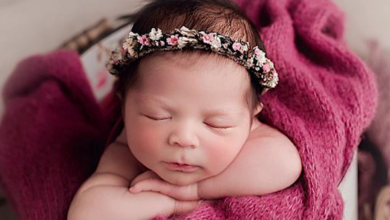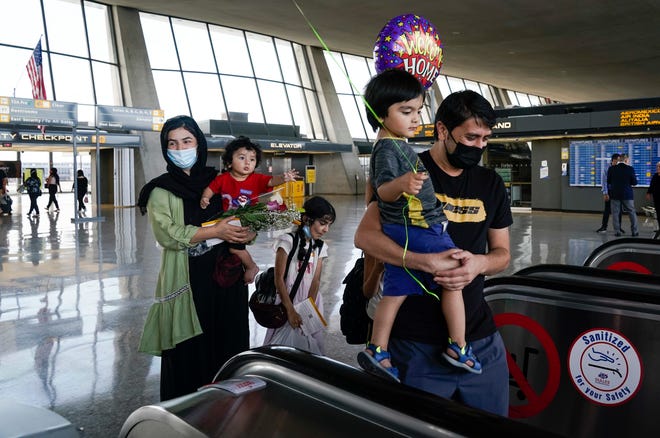
Lena Bobb was on her way to line dancing class in 2015 when she suffered a stroke that would leave her in a wheelchair. While she can speak, she now hardly talks.
When Lena returned home after her stroke, her daughters tried to care for her in her own home, but it was too difficult. Her daughter, Guselyn Bobb, had recently moved into a single-level home in the Pleasant Run Farm neighborhood of Springfield Township, a place Lena helped her find.
[ Sign up for the free Coronavirus Watch newsletter to get the latest on the Cincinnati region ]
Guselyn recalled thinking when she was looking for a new place to live that she wanted a one-level home in case Lena ever got sick.
“But I never really assumed that she would actually be living with me,” she said.
Guselyn, 58, moved Lena into her home and quit her job at UPS to be her full-time caregiver. For the last 5 ½ years, she’s done everything for her 87-year-old mother, from clothing and bathing her to giving her medication to getting her in and out of her wheelchair.
“This is what I do every day, all day long,” she said.
Guselyn is one of an estimated 1.5 million Ohioans who care for an older loved one, according to 2017 estimates by the AARP Public Policy Institute in its 2019 family caregiver report. The report estimates Ohio caregivers provided 1.27 billion hours of unpaid care in 2017 for older friends and relatives.
COVID-19 vaccination:Tell us your experience getting or scheduling a COVID-19 vaccine
The COVID-19 pandemic has caused older Americans to rely more on family and friends as they delay surgeries or checking into nursing homes, experts say.
But Ohio’s current guidelines for COVID-19 vaccinations don’t explicitly make caregivers eligible to receive the vaccine. Only caregivers who already meet requirements based on their age, medical conditions or occupations can get vaccinated at this point.
A complicated question
Vaccinating family caregivers raises complicated questions about the best way to care for seniors who are more vulnerable to COVID-19.
The reason family caregivers were not included in the state’s vaccine eligibility was a matter of supply, Ohio Department of Health spokesperson Megan Smith said in an emailed statement.
Home health workers who are employed through an agency qualify to get vaccinated in Ohio under Phase 1A since they are health care workers.
In the early stages of vaccinations when supply has been limited, the state has been focusing on devoting what doses it has to its most vulnerable populations, Smith said. This includes Ohioans 65 and older, who make up the overwhelming majority of the state’s COVID-19 deaths. (Roughly 93% of Ohio's COVID-19 deaths have been people over the age of 60, according to data released on the state's COVID-19 dashboard.)
“While there are many groups who have important reasons they should be prioritized, there simply isn’t enough vaccine to go around at this time,” Smith said.
Smith said in time, all Ohio residents who choose to get vaccinated will be able to receive vaccines once more supply is available.
Ohio vaccinations:Ohio launches 16 mass COVID-19 vaccination sites across the state
Unlike age or medical conditions, it would be hard for the state to prove that someone is a caregiver, said Robert Applebaum, director of the Ohio Long-Term Care Research Project through the Scripps Gerontology Center at Miami University.
“If you could say to me, ‘This person is a primary caregiver for a 90-year-old person who needs a lot of help,’ then, yeah, that’s a no-brainer,” he said. “But how do you document that? How do you prove that?”
Some people might have multiple caregivers, he said, which could raise questions about which caregiver should qualify to get vaccinated first.
A few states, such as Illinois and Missouri, have given family caregivers vaccine eligibility as part of their Phase 1A rollouts. Massachusetts allows one caregiver to be vaccinated at the same time as their older friend or relative when they accompany them to their appointment.
Even if a senior can get vaccinated, not vaccinating their caregiver can potentially put them at risk in other ways.
While they likely can get vaccinated themselves, Applebaum said older people with caregivers, particularly those who have some type of disability, typically rely on their caregivers for help with things such as getting food or transportation. If their caregivers get sick, they potentially lose access to those things.
“If [the caregiver is] sick or they’re hospitalized, that puts that whole situation at risk,” said Ken Wilson, vice president of Program Operations for the Council on Aging of Southwestern Ohio.
Wilson said there also exists a gap in vaccinations for people who are currently eligible but unable to leave their homes to go to appointments. Caregivers for people who are homebound might be going in and out of the home, potentially exposing their unvaccinated friends or relatives to COVID-19.
The Centers for Disease Control and Prevention issued guidance on vaccinating homebound individuals Feb. 11. To prevent wasting vaccine, the CDC recommended vaccinating caretakers and family members of these individuals given their high levels of exposure to COVID-19.
Wilson said Ohio is still working on its plan for vaccinating people who are homebound at this point.
Guselyn said her main focus has been trying to get her mother vaccinated. Lena was finally vaccinated last Thursday after weeks of Guselyn and her sister trying to find her an appointment.
Guselyn would like everyone in her family, including herself, to get vaccinated, but she has concerns since she's heard about people having difficulty getting appointments for their second doses.
“If we can get the vaccine done, and we can have ours done, that would be water under the bridge,” she said. “That would be a relief.”
An increased reliance
The COVID-19 pandemic accelerated a shift in senior care away from nursing homes and toward home and community-based care that started decades ago.
Applebaum said there can be a perception that family caregiving has fallen by the wayside. In fact, more people are taking care of their older loved ones than ever before as a result of Americans living longer.
“It used to be that for many people, by the time that they got into their 40s, they didn’t have parents still alive,” he said. “Now many people in their 40s have both their parents alive.”
According to U.S. Census projections, the number of adults 65 and older is expected to exceed the number of children in the U.S. by 2034 for the first time in history. At that point, Americans will have more older relatives or close friends to potentially care for than children.
Nursing home occupancy rates have also been going down for the last few decades, said Susan Reinhard, senior vice president of the AARP Public Policy Institute, at a Feb. 22 panel during AARP’s legislative briefing.
“This isn’t new because people would prefer to live in their homes and communities,” she said.
Since more people are interested in-home and community-based services now, Reinhard said the challenge is shifting funding to those services to support caregivers.
During the legislative briefing, the panel presented AARP’s most recent assessment of Ohio’s long-term services and support systems. The two areas identified where Ohio needed the most improvement were giving people more options to self-direct their care, including using more home and community-based services and providing support for caregivers.
When the pandemic started, and older Ohioans became the group most clearly at risk of dying from COVID-19, Council on Aging’s Wilson said more people started providing care for older relatives than they normally would have, such as getting groceries or running errands.
Additionally, Wilson said more people are avoiding going into hospitals or long-term care settings because they fear contracting COVID-19 there.
When people do go to the hospital, they are staying there for shorter periods of time and avoiding going to nursing homes to recuperate after surgery, Applebaum said. That means they need more help from family or friends when they get home.
“The kinds of things family caregivers are doing have never been more extensive,” Applebaum said. “It’s just a lot of pressure on caregivers.”
Even without the pressures of a pandemic, caring for a loved one can be difficult.
“It’s a hard task,” Guselyn said. “Your heart has to be in it.”
She said being her mother's caregiver can be stressful sometimes.
“I’ve cried a lot, especially in the beginning, because it has changed my life tremendously,” she said.
Still, Guselyn said she’s fine with making that change. Her parents divorced when she was young. Lena raised her children on her own and sent them to college. Guselyn feels like she's doing what she's supposed to do by taking care of her mother now.
“I’m OK with that because she’s done everything for me in my life, and I feel that I owe this to her,” she said.
Ohio COVID-19 cases by county
Source link









